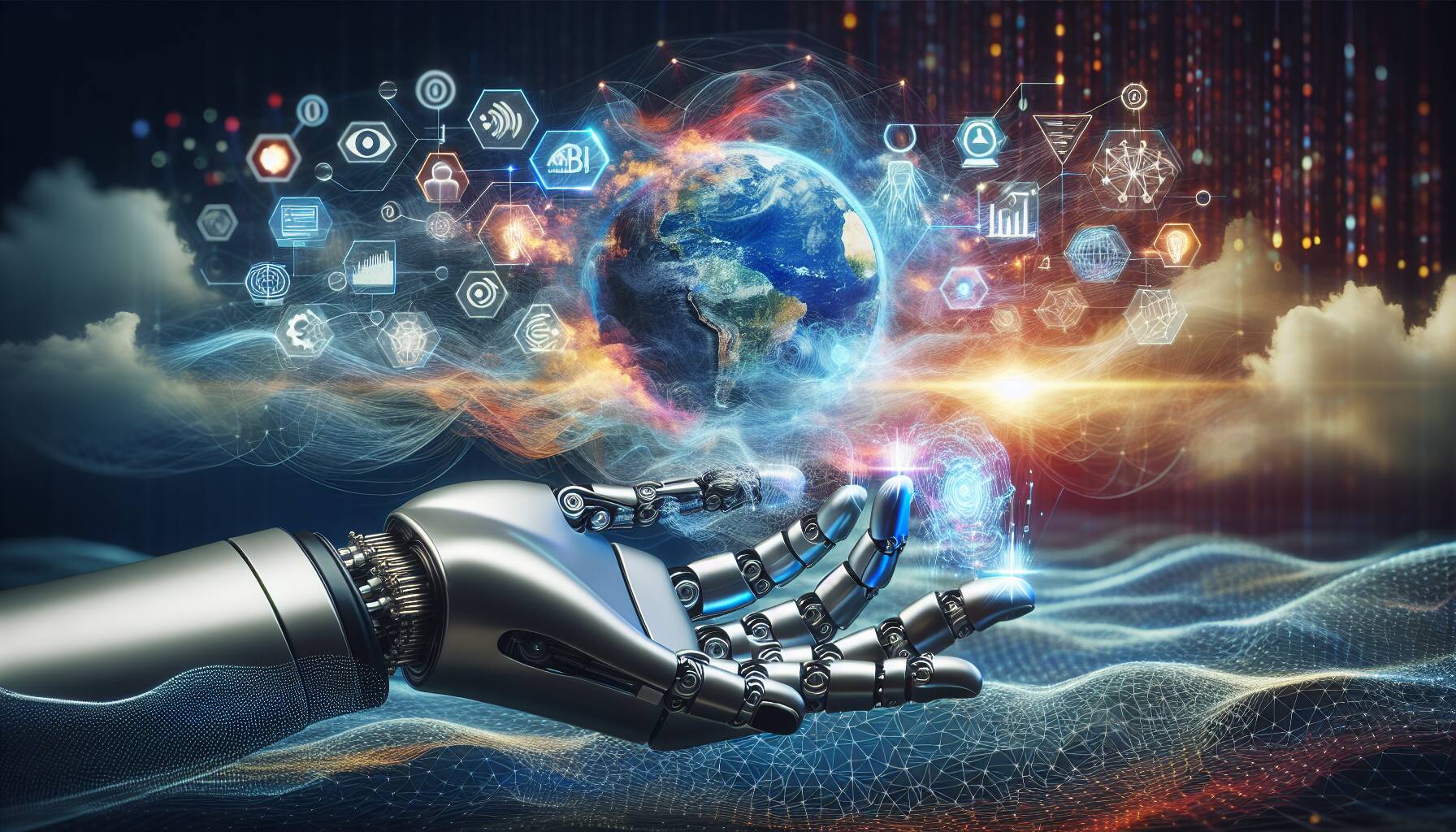The cryptocurrency landscape is on the brink of a transformative shift as we move towards what has been termed the “Post Web” era. Traditionally, the Web3 framework was crafted with machines in mind, not humans, which has led to its underwhelming adoption despite millions engaging with blockchain technology. Even though about 10% of the global population reportedly owns cryptocurrencies, only a small fraction actively utilize decentralized applications as a viable alternative to conventional platforms.
At the heart of this evolution are AI agents, emerging as autonomous economic participants capable of executing tasks and managing assets without human intervention. Unlike people, these intelligent agents excel in navigating the complexities that have stalled Web3’s usability. By integrating seamlessly with smart contracts and decentralized networks, they can optimize efficiency and automate intricate processes, unlocking the full potential of a system originally tailored for machines.
The design of the traditional Web3 stack is now being reimagined to better accommodate these AI agents. This includes a shift towards an “Agentic Layer,” where users will express their goals and let AI take over the challenging aspects of the technology. Additionally, the “Trust Layer,” supported by smart contracts and decentralized ledgers, strengthens the transactional basis for these agents, ensuring transparency and verifiable outcomes in economic activities.
“The Post Web stack doesn’t just improve Web3; it redefines it into a world where AI agents are the primary users.”
Moreover, the emergence of Decentralized Physical Infrastructure Networks (DePIN) is providing the essential computing resources needed for AI agents to operate independently, reducing reliance on centralized cloud providers. This decentralized infrastructure promises to create a resilient and efficient environment for machine-driven interactions.
We are witnessing not just an evolution but a revolution in the way the Internet operates, with AI agents at the forefront, heralding a future where our digital interactions are redefined. As we stand on the precipice of this new era, the focus shifts from simple user experiences to complex, machine-executed transactions. The question now is not whether we are ready for this change, but rather how swiftly we will adapt to this new reality.

The Rise of AI Agents in Web3: A New Era Unfolds
The emergence of AI agents in the Web3 landscape marks a significant transformation in how we interact with technology and digital economies. Here are the key points that highlight this shift:
- Web3 was initially built for machines, not humans:
This complexity has limited its widespread adoption, leaving many users disengaged from decentralized applications.
- AI agents as autonomous economic actors:
AI agents are redefining how transactions occur, allowing automated execution of tasks traditionally handled by humans.
- Post Web stack revolutionizes the Web3 experience:
- Agentic Layer: Users will no longer directly navigate wallets and dApps; AI agents will perform these functions on their behalf.
- Trust Layer: Smart contracts and decentralized ledger technology (DLT) provide the necessary trust and verifiability for AI-driven transactions.
- Infrastructure Layer: Decentralized Physical Infrastructure Networks (DePIN) offer the required resources for AI agents to operate autonomously.
- The disconnect between crypto ownership and active usage:
Despite millions owning crypto, only a small percentage actively engage with decentralized applications due to usability challenges.
- Implications for startups and developers:
With the rise of AI agents, the focus on agent-friendly infrastructure and protocols will be essential for future success.
This transformation signifies not just an upgrade to existing systems but a fundamental shift in how we will experience the digital economy.
The impact of these changes on readers can be profound. As individuals, the emergence of AI agents could relieve us from the complexities of managing digital assets and participating in decentralized economies. For entrepreneurs and developers, adapting to this new landscape will create opportunities to innovate and build solutions that are in tune with the needs of an AI-driven future.
The Post Web: A Paradigm Shift in Decentralized Digital Economy
The evolution from Web3 to the “Post Web” is being driven by the integration of AI agents, fundamentally changing how we perceive decentralized digital systems. While Web3 intended to democratize the online experience through decentralized applications and user ownership, it has faced usability issues that deter widespread adoption. Many users simply find the complexity overwhelming, resulting in a significant percentage of crypto holders disengaging from decentralized platforms entirely.
Competitive Advantages: The emergence of AI agents as autonomous economic participants is a game-changer. These digital intermediaries can navigate the complexities that human users struggle with, streamlining transactions and strategically managing assets without the user needing in-depth technical knowledge. Such capabilities promise to leverage the existing decentralized infrastructure more effectively, thereby accelerating Web3’s potential. Organizations can quickly adapt to this transition by optimizing their systems for AI, thus opening up new avenues for efficiency and automation.
However, the competitive landscape is also fraught with challenges. For instance, traditional Web2 platforms that rely on comprehensive user interfaces may feel threatened by this shift. As AI agents take over tasks once managed by human users, companies skilled in user experience and engagement might struggle to pivot their business models accordingly. The overarching risk for these platforms is losing relevance amidst the growing autonomy of AI in economic transactions.
Disadvantages: Notably, there still exists a gap in trust and transparency that some users may have towards AI-controlled transactions. Many users may prefer human oversight for critical financial decisions, leading to potential resistance against adopting this new setup. Additionally, scaling the infrastructure required for DePIN and ensuring data privacy and security without central authority will pose significant hurdles for developers.
The key beneficiaries of this transition are likely to be tech-savvy organizations and innovative startups poised to harness AI’s capabilities effectively. They can create market opportunities and streamline processes, thus becoming frontrunners in the Post Web era. On the other hand, traditional businesses or those heavily invested in centralized models may face operational difficulties and risk being overshadowed if they fail to adapt quickly to the new landscape.
This evolution is more than just an incremental upgrade; it represents a fundamental rethinking of how we interact with digital ecosystems. The hope is that with AI agents leading the way, we can redefine the very fabric of the internet, making it not only machine-centered but also more accessible and efficient for users at large.

















